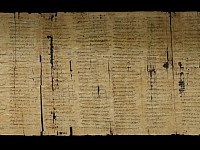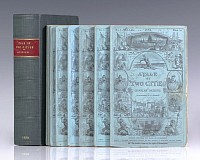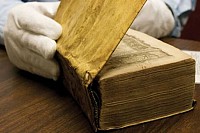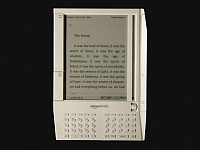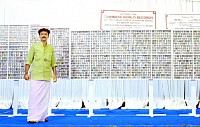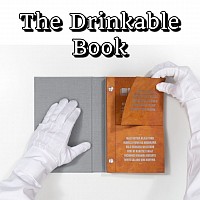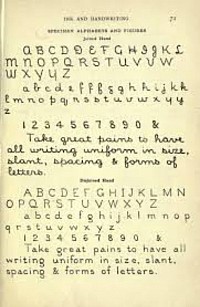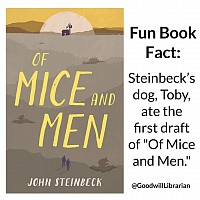FUN BOOK FACTS
The Earliest Books
The earliest “books” were written in the form of tablets of clay, scrolls, and sheets of papyrus. The earliest tablets, discovered in Mesopotamia, date back as far as 3,000 B.C. The first use of papyrus has been tracked to the First Dynasty of Egypt (about 2400 B.C.), where “paper” was created using the marrow of papyrus reeds thinned into sheets that were pasted together to make scrolls more than 10 yards long.
The Oldest Book
Diamond Sutra is a Sanskrit text that dates back to 686 A.D. It’s known as the first creative work to be provided to the public domain, ending with “for universal free distribution."
The Book with the Most Copies Sold
While it’s difficult to report on every book ever sold, the Bibleis touted as having more than five billion copies printed and distributed. Don Quixote is recognized as the most distributed fiction book, but again, the numbers aren’t there to support the claim. The top verified book is A Tale of Two Cities by Charles Dickens, with over 200 million copies sold.
And just in case you’re wondering where Harry Potter fits in…the entire series has sold over 500 million copies combined!
A book owned by Harvard University library recently revealed its grisly history, when confirmed that it was bound in human skin.
Staff at the university believe that the book, Des Destinees de l'Ame (Destinies of the Soul), was covered with the skin of an unclaimed female mental patient who died of natural causes. Writer Arsene Houssaye is said to have given the book in the mid 1880s to his friend, Dr Ludovic Bouland, who apparently carried out the unusual binding.
Covering books in human skin, known as anthropodermic bibliopegy, was a particular subject of interest in the 19th Century, although it is understood the practice goes back further.
(Source: Wikipedia)
The first generation Kindle was released on November 19th, 2007 and was sold out in only 5½ hours!
The first-ever Kindle cost $399, and after it was sold out it remained out of stock for five months until late April of 2008.
With its 250 MB of internal storage, it could hold approximately two hundred non-illustrated titles at a time. It also had a speaker and a headphone jack for listening to audio files.
(Source: Wikipedia)
The largest collection of miniature books consists of 3,137 unique books.
The largest collection of miniature books consists of 3,137 unique books and belongs to Sathar Adhoor in India. The collection was verified in Thrissur, India, on June 4, 2016 by Guiness World Records.
A miniature book is a very small book, no larger than 7.5 cm (3 in) in height, width or thickness.
William Shakespeare’s First Folio
This first edition collection of the bard’s plays, was the most expensive book sold at Sotheby’s auction house in 2006 for £2.5 million. In 1623, seven years after Shakespeare’s death, this book was published and was dedicated to the “incomparable pair of brethren”, otherwise known as the two brothers, William Herbert (the 3rd Earl of Pembroke) and the Earl of Montgomery, Philip Herbert (later, the 4th Earl of Pembroke). It contains a dozen plays that have never been reprinted, as well as many that are considered classics today.
A first edition copy of JRR Tolkien’s The Hobbit has sold for over £10,000.
A first edition copy of JRR Tolkien’s The Hobbit has sold for over £10,000 ($12,849.75) after being discovered by chance in a Dundee charity shop.
The rare copy of the famous book, which follows the adventures of Bilbo Baggins, was found by a manager at the Cancer Research UK superstore at Gallagher Retail Park.
Published in 1937, the book is one of just 1,500 copies released in the original run and features black and white illustrations by Tolkien himself.
Read more: https://ow.ly/UOEP50P9E10
The World's Most Expensive Cookbook is by Dom Perignon.
Want to treat your friends and family with delicious recipes like the five-star chefs? Then, cheers! Dom Perignon has produced his latest cookbook packed with recipes by the best chefs in the UK.
'Dom Perignon Vintage 1998 The Collection' is packed with recipes, portraits and reminiscences by the world's most bankable celebrities. The book is limited edition, with only 30 copies in print, and is covered in sea-green galuchat leather, harvested from a rare Japanese Ray.
The recipe treasure includes recipes from Britain's top chefs including Tom Aikens, Angela Hartnett and Michael Caines. The exclusive cookbook is priced at a whopping $1,710. But, if you want to prepare dishes as delicious as five-star hotels then, it is worth it!
A book that purifies water, The Drinkable Book, is printed on filter paper capable of killing deadly waterborne bacteria.
The book was created by non-profit organization, WATERisLIFE, to raise awareness on proper sanitation and hygiene. Each page is coated with silver nanoparticles that instantly kill waterborne bacteria that cause diseases such as cholera, typhoid, and E. coli.
But apart from being a cleaning filter, the book teaches the importance of proper sanitation and hygiene.
Teeny Ted from Turnip Town (2007), is certified by Guinness World Records as the world's smallest reproduction of a printed book.
The book was produced in the Nano Imaging Laboratory at Simon Fraser University in Vancouver, British Columbia, Canada, with the assistance of SFU scientists Li Yang and Karen Kavanagh.
The book's size is 0.07 mm x 0.10 mm. The letters are carved into 30 microtablets on a polished piece of single crystalline silicon, using a focused-gallium-ion beam with a minimum diameter of 7 nanometers (this was compared to the head of a pin at 2 mm, 2,000,000 nm, across). The book has its own ISBN, 978-1-894897-17-4.
The story was written by Malcolm Douglas Chaplin and is "a fable about Teeny Ted’s victory in the turnip contest at the annual county fair."
The book has been published in a limited edition of 100 copies by the laboratory and requires a scanning electron microscope to read the text.
In December 2012, a Library Edition of the book was published with a full title of Teeny Ted from Turnip Town & the Tale of Scale: A Scientific Book of Word Puzzles and an ISBN number 978-1-894897-36-5. On the title page it is referred to as the "Large Print Edition of the World's Smallest Book".
(Source: wikipedia)
Do you know the monster's name in Frankenstein?
No... it is not Frankenstein, even though many people mistakenly think it is. He is never actually given a name in the book, although he does almost name himself, when speaking to his creator, Victor Frankenstein.
The creature states, 'I ought to be thy Adam, but I am rather the fallen angel, whom thou drivest from joy'. The creature thinks he is like Adam because he is the innocent who got rejected by his creator and feels lonesome without his Eve.
Get it: Frankenstein
Librarians were once taught a special rounded style of handwriting to ensure uniformity and legibility in catalogs.
The handwriting style, called the “library hand,” was developed by Thomas Alva Edison in 1885. Based on Edison’s own handwriting, the style was especially perfected to allow librarians to “take legibly from the wire, longhand, forty-seven and even fifty-four words a minute."
John Steinbeck’s dog, Toby, ate the first draft of Of Mice and Men.
Every teacher has rolled their eyes at the “my dog ate my homework” excuse, but it really happened to one of America’s most revered authors.
In 1936, John Steinbeck’s dog Toby, an Irish setter, turned the first draft of Of Mice and Men into a snack. In a letter dated May 27 of that year, the future Pulitzer and Nobel Prize winner wrote that he “was pretty mad, but the poor little fellow may have been acting critically.”
Get it: Of Mice and Men
